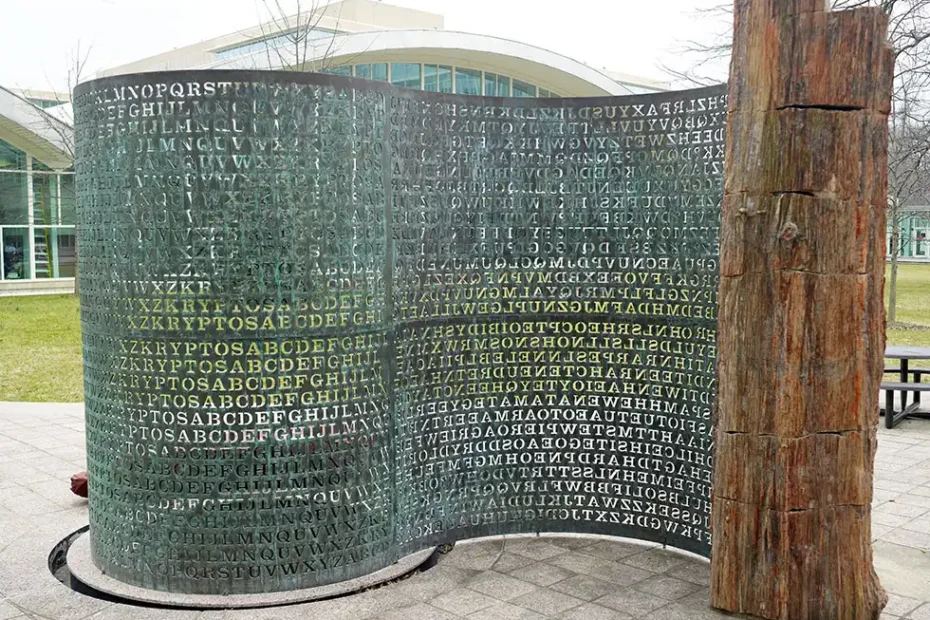The 35-Year Mystery of Kryptos Has Finally Been Solved
After more than three decades of speculation, obsession, and sleepless nights from cryptographers around the world, the secret behind one of the world’s most famous unsolved puzzles — Kryptos — has finally been revealed.
Two writers, Jarett Kobek and Richard Byrne, have reportedly cracked the elusive fourth and final section of the CIA’s iconic coded sculpture, hidden for years within the archives of the Smithsonian Institution.
What Is Kryptos?
Installed in 1990 at CIA headquarters in Langley, Virginia, Kryptos is a massive copper sculpture designed by artist Jim Sanborn. Etched into its surface are 869 encrypted characters divided into four sections — known to puzzle-solvers as K1 through K4.
While the first three sections were solved during the 1990s, the final passage, K4, remained unsolved for 35 years. The short, 97-character message beginning with “OBKR” became one of the most notorious unsolved mysteries in the history of cryptography.
To claim a solution, a solver must not only provide the decoded plaintext but also show the method used to decrypt it.
How the Final Clue Was Found
In 2024, as Sanborn prepared to auction off the K4 solution — with expected bids between $300,000 and $500,000 — the long-running saga took an unexpected turn.
Kobek and Byrne, intrigued by the auction listing, noticed that Sanborn’s “coding charts” were listed among the Smithsonian archives. Byrne photographed the papers, and Kobek realized that some taped-together scraps revealed the missing plaintext. Among those scraps were phrases already familiar to the Kryptos community: “BERLIN CLOCK” and “EAST NORTHEAST.”
When they sent the decoded text to Sanborn, he confirmed its authenticity — explaining that the papers had been accidentally included in the Smithsonian’s collection while he was battling cancer years earlier.
Soon after, Sanborn requested that the Smithsonian seal the files for 50 years, ensuring the details remain hidden until at least the mid-2070s.
Controversy and Legal Tensions
Following the discovery, RR Auction, which had been managing the sale, issued a warning to the writers — threatening legal action if they published the decrypted text, citing interference and copyright concerns.
RR Auction stated that only the materials offered in the auction provided the authorized insight into how K4 fits within Sanborn’s broader artistic vision. Even with the plaintext known, they emphasized, the true method remains undisclosed.
As Elonka Dunin, a prominent Kryptos researcher and co-moderator of one of the largest fan communities, explained:
“We’ve had many people over the years claim they solved it. But if they can’t show the method, they just get booted out of the room.”
More Than Just a Code
RR Auction also hinted at something deeper — a fifth hidden layer within Kryptos, a rumored “K5” that only the auction’s winning bidder will fully understand through Sanborn’s notes and explanation of the sculpture’s complete meaning.
While some cryptographers are celebrating the apparent end of the Kryptos mystery, others have described the discovery as an “ugly end” to one of the greatest unsolved riddles of the modern age.
The End of a 35-Year Obsession — or Just Another Beginning?
Regardless of where the debate lands, Kryptos has already earned its place in history. For decades, it has captivated intelligence analysts, puzzle solvers, artists, and dreamers alike.
As Dunin succinctly put it:
“For a piece of art, if you can get someone’s attention for 10 minutes, that’s pretty good. Sanborn now has a piece of art that has held people’s attention for 35 years.”
The Legacy of Kryptos
The story of Kryptos is more than just a tale of encryption — it’s a reminder of humanity’s relentless pursuit of meaning, even when the answers are buried in plain sight.
Whether you see it as a code, a work of art, or a philosophical challenge, Kryptos has proven that the mystery itself is what keeps us searching.

